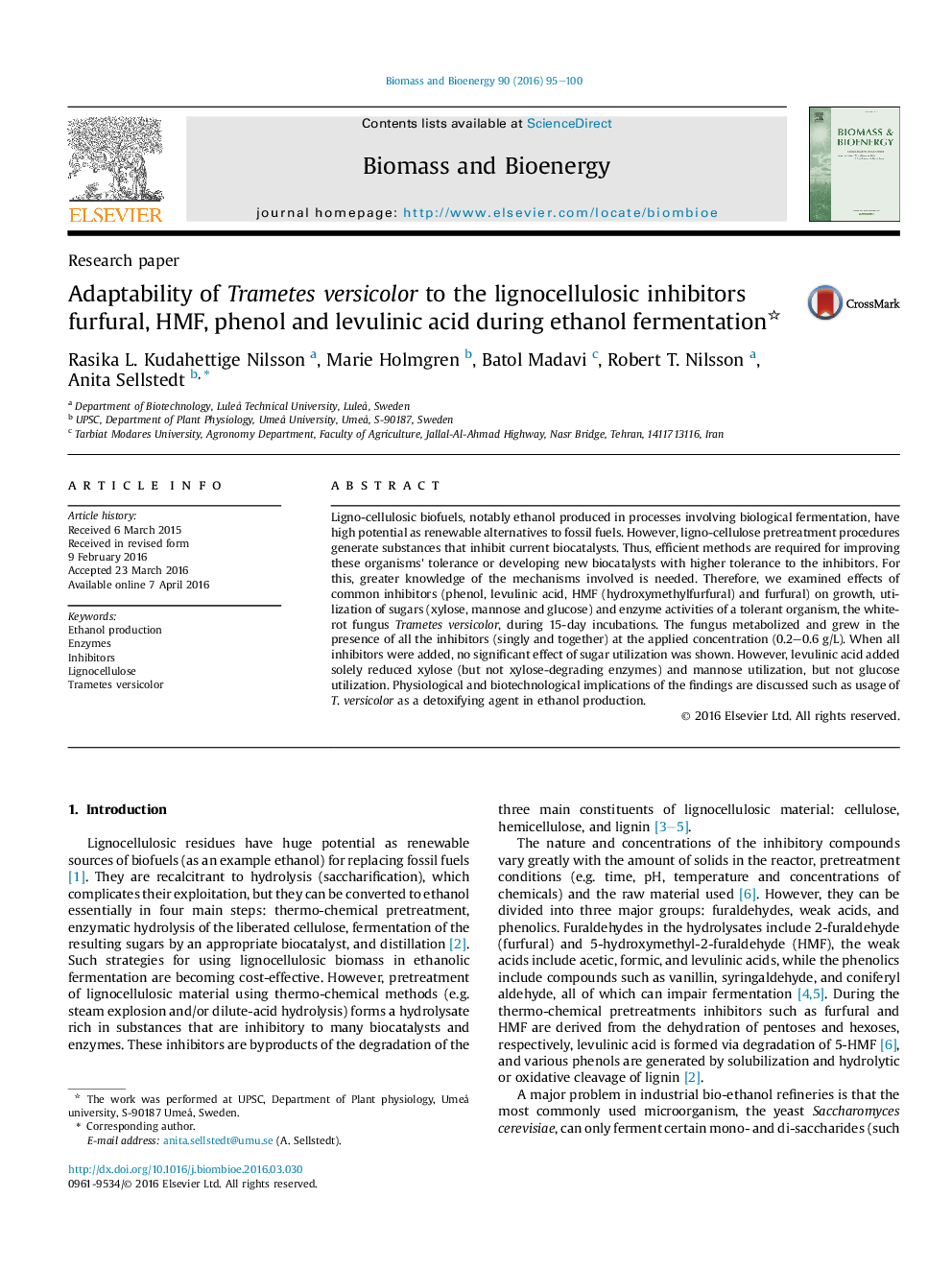| Article ID | Journal | Published Year | Pages | File Type |
|---|---|---|---|---|
| 676696 | Biomass and Bioenergy | 2016 | 6 Pages |
•The fungus Trametes versicolor grew in the presence of all the inhibitors (singly and together) at the applied concentration.•The fungus digested all inhibitors.•It is concluded that Trametes versicolor can be applied as a detoxifying agent in bioethanol production.
Ligno-cellulosic biofuels, notably ethanol produced in processes involving biological fermentation, have high potential as renewable alternatives to fossil fuels. However, ligno-cellulose pretreatment procedures generate substances that inhibit current biocatalysts. Thus, efficient methods are required for improving these organisms' tolerance or developing new biocatalysts with higher tolerance to the inhibitors. For this, greater knowledge of the mechanisms involved is needed. Therefore, we examined effects of common inhibitors (phenol, levulinic acid, HMF (hydroxymethylfurfural) and furfural) on growth, utilization of sugars (xylose, mannose and glucose) and enzyme activities of a tolerant organism, the white-rot fungus Trametes versicolor, during 15-day incubations. The fungus metabolized and grew in the presence of all the inhibitors (singly and together) at the applied concentration (0.2–0.6 g/L). When all inhibitors were added, no significant effect of sugar utilization was shown. However, levulinic acid added solely reduced xylose (but not xylose-degrading enzymes) and mannose utilization, but not glucose utilization. Physiological and biotechnological implications of the findings are discussed such as usage of T. versicolor as a detoxifying agent in ethanol production.
